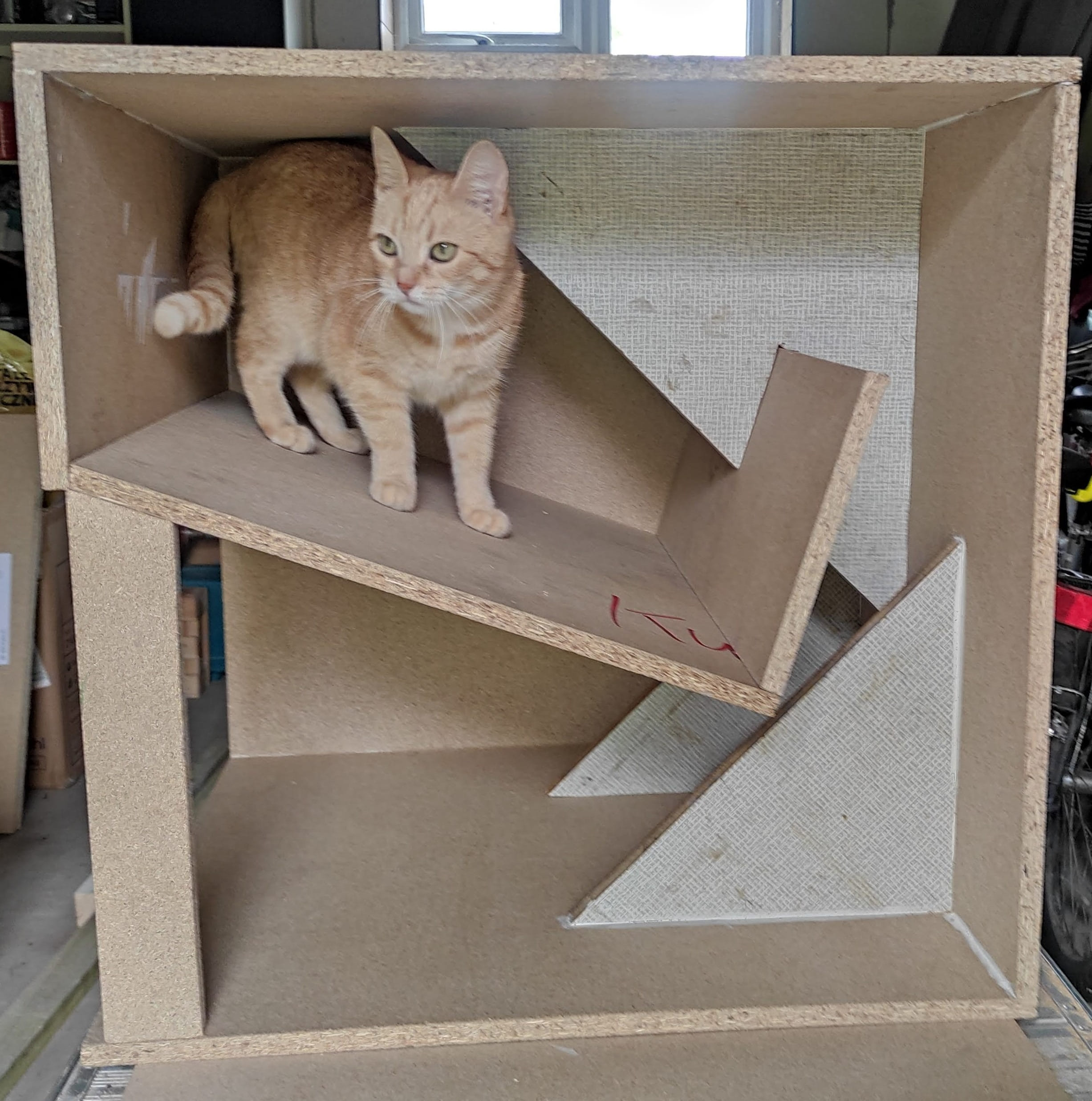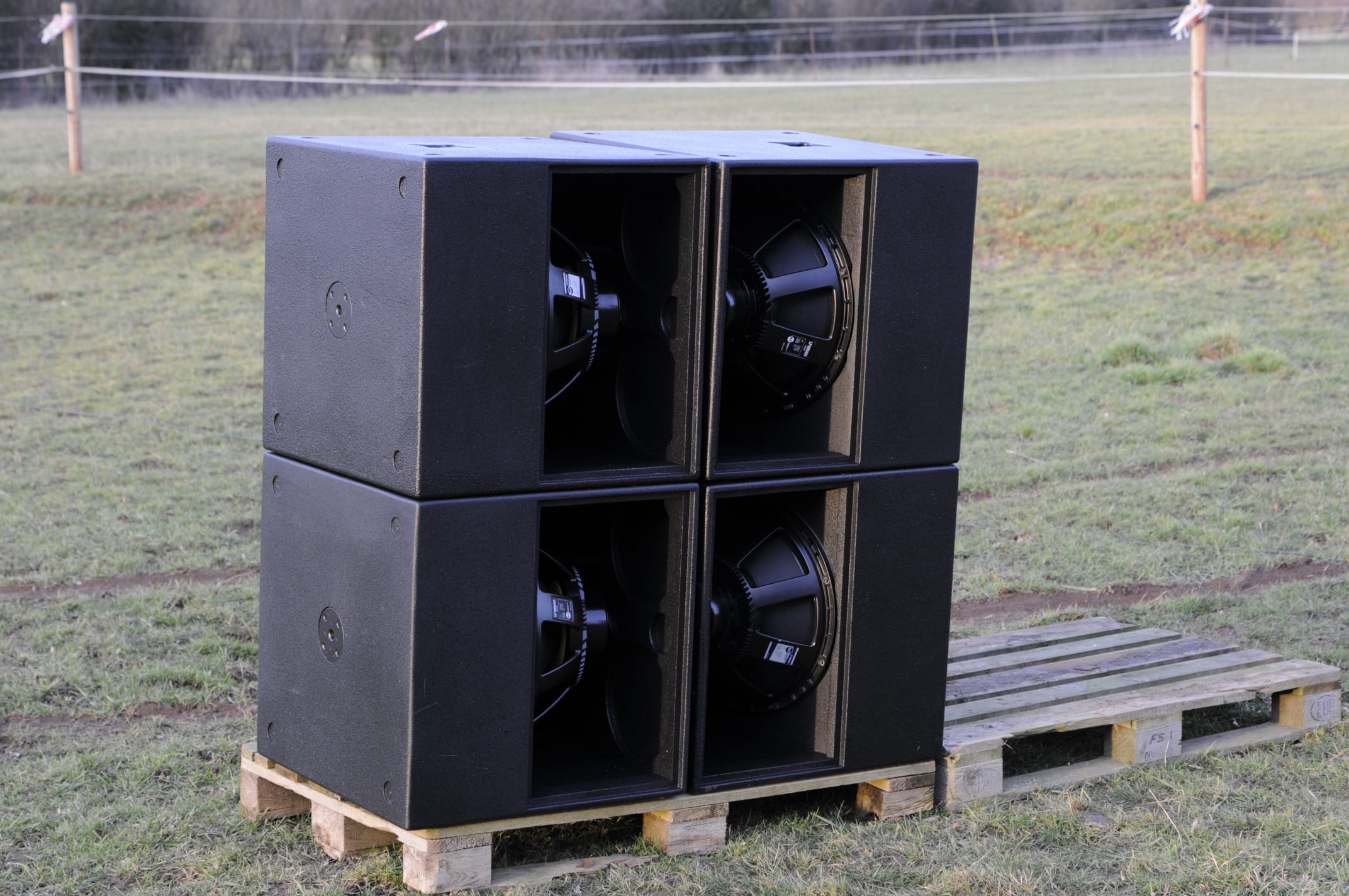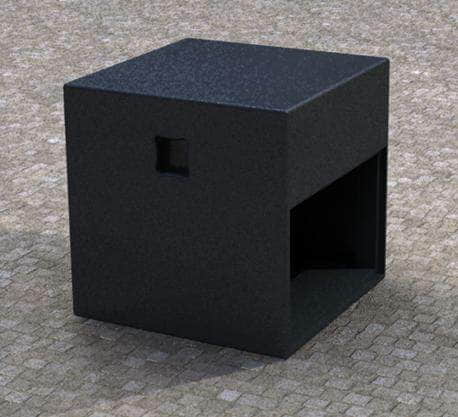- Posts: 4
- Thank you received: 0
Cubo 15
- TommyBear
-

- Offline
- New Member
-

Unfortunately, I can only find German-language contributions that are all without 'depth' and therefore do not help me. I had assumed that the loudspeaker could be found in other countries under a different designation, hence the question.I'm not sure why there's a lack of reports on the 15LB100, I know it has been used a few times. I'm expecting it to work as intended.
At Thomann there are two more budget speakers presumably from the same Chinese source: 18-500/8-A and 15-300/8-A. Is there any experience regarding the use of the 18" in the Cubo Sub? And the other 15" should be usable in the Cubo Kick 15 - its low maximum excursion should allow a safe operation with a 4th order high pass filter in the range of 100.125 Hz...
Cheers
Please Log in or Create an account to join the conversation.
- TommyBear
-

- Offline
- New Member
-

- Posts: 4
- Thank you received: 0
It is clear that due to the wavelengths in the frequency range under consideration, the approximation of a horn contour is easier/less problematic than in the mid-range or high-frequency range. In my opinion, however, this only applies to the consideration of the amplitude curve over the frequency. The discontinuities definitely lead to reflections and these should be reflected in the transient and decay behaviour. I don't have the experience here to know how strong this is and whether the effort is worthwhile through - still discrete - but more continuous transitions between the segments.Consider the size and behaviour of the frequencies involved here. A wavelength at 100 Hz is 3.4 meters, at 10.000 Hz it's 3.4 centimeters, so at 10 kHz your thumb is a considerable obstacle but at 100 Hz your entire arm isn't. Likewise, at 10 kHz this horn is a complete mess but at 100 Hz and below it isn't noteworthy. You might find a stepped segment response to have the same order of performance.
How do you assess this from your wealth of experience? Efficiency losses/reduced sound pressure due to overall volume reduction but better behaviour in the time dimension?
Greetings
Please Log in or Create an account to join the conversation.
- TommyBear
-

- Offline
- New Member
-

- Posts: 4
- Thank you received: 0
If the Extra Extended abandons the KISS principle to some extent, why not optimise this first segment further? The first 'channel' segment serves - if I have understood the explanations correctly - to extend the horn. Here, too, I have the feeling that the design creates an avoidable resonance that is reflected in the in/out vibration behaviour - but perhaps my gut feeling is simply deceiving me here...Knowing the above frees the ability to look at the segments from a different perspective, the Extra Extended segments approximate a hyperbolic horn contour, giving a lower tuning at the expense of output near the 50 - 60 Hz mark. If you keep the horn mouth the same, a smoother horn flare rate will decrease low frequency extension, while increasing output near that same mark.
Extended stands to lose the KISS-principle, 3 angled cuts instead of 1, no backward compatibility between Standard and Extended because of cut sheet differences and construction. All the while I don't think you'll simulate a significant difference let alone measure something. Feel free to try though.
Would it be an approach to improve the approximation on the one hand and the stability on the other hand by using two conically arranged boards in this first segment? Or, with less material input - and less gain in stability - to make the segment boundary not parallel to the lid? In any case, the desired extension of the horn would be achieved.
Curious Sunday greetings
Please Log in or Create an account to join the conversation.
- Cubo15
-

- Offline
- Platinum Member
-

- Posts: 929
- Thank you received: 132
There's a few things to consider as designing a (bass) cabinet is about compromises, any 'optimization' of the design will lead to at least one 'downgrade' in another field of performance. What you call an optimization of A, someone else will just call B performing worse.
An expanding horn with length X will not tune as low as a non-expanding horn of the same length, based on excursion minima, although this might not necessarily show as such in the frequency response. In other words, increasing the flare rate of the horn will decrease the tuning frequency. Secondly any increase in horn volume, be it by length or horn circumference increase, will lower the volume of the rear chamber which will further increase the tuning frequency, unless the increase in horn length offsets the decrease in rear chamber volume. You could opt to decrease the horn throat but this will increase the compression ratio, which can lead to unpredictable behavior (beyond simulation) and possible damage to the driver on high power levels. To keep the design favorable to a wide range of drivers, with unknown quality within the Qts x Vas range, the compression ratio is best sparingly increased if at all.
Regardless of how you combine these factors, unless you keep the horn volume from increasing, your optimization of the horn flare will decrease the low bass output and increase the peakyness of the lower response. Resulting in worse time behavior below 100 Hz and less low bass output, in return for better time behavior above 100 Hz and a slightly higher allowable crossover frequency.
If you're interested in the time domain, look at the group delay, phase and impulse response in Hornresp. They're however not always straightforward in their practical meaning and as your suggested changes are small, so are the differences in these graphs, it might be impossible to call one better then the other. For me it's the combination of simulating, building and hearing multiple designs that gives me a feel for how to interpret the combination of these graphs and what is desired, I'm positive I do not understand as much of it as I could or would like to.
If you're not really sure how this flare rate optimization does improve characteristics to what extend and in what way, I suggest opening a topic about it on diyaudio.com, not only will you find more like-minded souls but also the wealth in knowledge currently lacking either of us
Please Log in or Create an account to join the conversation.
- oskarociak
-

- Offline
- New Member
-

- Posts: 4
- Thank you received: 0
Please Log in or Create an account to join the conversation.
- Cubo15
-

- Offline
- Platinum Member
-

- Posts: 929
- Thank you received: 132
Cubo
Please Log in or Create an account to join the conversation.
- Nugget
-

- Offline
- New Member
-

- Posts: 6
- Thank you received: 0
I am not quite sure how you mean this. Probably you just meant that you wouldn't measure a difference between a cubo extra extended and a cubo extra extended with slightly different first panel.Extended stands to lose the KISS-principle, 3 angled cuts instead of 1, no backward compatibility between Standard and Extended because of cut sheet differences and construction. All the while I don't think you'll simulate a significant difference let alone measure something.
BUT since i often read in this forum, that Cubo standard and Cubo extended don't differ from tuning because of the longer port / smaller chamber relation, let me just say that i measured totally different. In my measurements (and i have measured at least 5 different Cubos (or extended) from different builders/build periods), Cubo ist tuned at around 47,5 hz, while Cubo extended is Tuned at around 40,5hz when used alone (a stack of four lowers tuning only by 1 hz to 39,5hz). Apart from tuning, there is also lower upper extension for Cubo extended. At cubo extended it's about 138hz, while it's way higher on Cubo standard (i don't have the measurement on hand right now, it's about 170-180hz if i remember correctly).
Don't get me wrong, i like Cubo extended a lot ( i use 4 with RCF LF18N401), but you need special care with the crossover to the midrange driver. I eq out the resonance, set at good LP and time align the 2 sources using a RTA like SMAART and still, there is phase issues above 180hz, because of the bad high frequency exctension. The idea to use them together with normal size horn tops without a kick is not a good one...
Please Log in or Create an account to join the conversation.
- Cubo15
-

- Offline
- Platinum Member
-

- Posts: 929
- Thank you received: 132
Cubo
Please Log in or Create an account to join the conversation.
- BwoySkanky
-

- Offline
- New Member
-

- Posts: 1
- Thank you received: 0
J'aurais quelques tites question désolé, en faite j'ai pour projet de me faire un ''''mini'''' Sound spécialement pour style: Reggae,Steppa,Dub....
Et donc je me renseigne et je tombe sur le mignon Cubo 15 que je ne connaissais mais alors pas du tout et vraiment avec les retours de certains et autres ca ma carrément donner envie faut dire alors voilà, j'ai acheter un HP
the box Speaker 15-300/8-A
Puissance: 300 Watt RMS, 1200 Watt crête
Impédance: 8 Ohm
Réponse en fréquence: 50 - 4000 Hz
j'ai aussi vu que si on utilise du 15" il serais recommander d'utiliser du Multipli bouleau donc je vais chercher ça demain les planches mais en attendant je me demandais quel filtre utiliser pour les basse et a partir de quelle fréquence ?.. merci beaucoup pour votre temps de pri pour me répondre et désolé du roman....
Derniere chose:
Dans l'avenir j'aimerais bien une tite tour comme ceci vous en pensez quoi ?
1 Cubo 15 ext/1 Cubo kick/T2v et par la suite la doublée alors je voit en grand voir trop grand pour comencer et seul en + ? ou est-ce possible d'un coté sachant que le temps et l'argent n'est pas un probleme ha oui sachant que je me suis renseigner sur cette config car ca me parraisser budget Moyen fin bon c'est vous les pro, je suis juste jeune amateur.
VOilà fini désolé encore et merci beaucoup
Please Log in or Create an account to join the conversation.
- nemsik
-

- Offline
- New Member
-

- Posts: 8
- Thank you received: 0
Is your email correct? Unfortunately, I can't send the message to you.
Please Log in or Create an account to join the conversation.